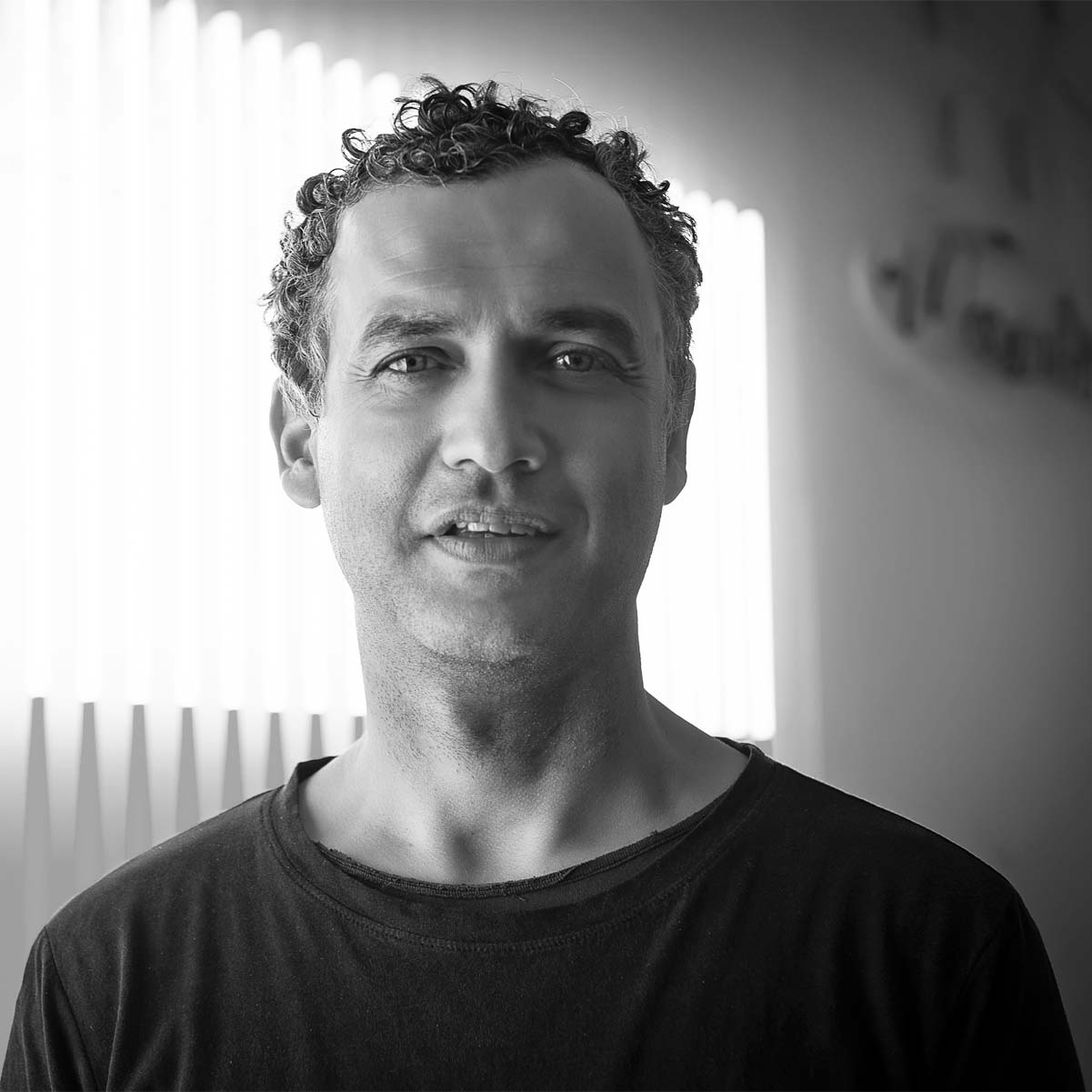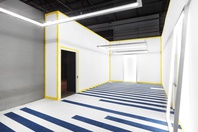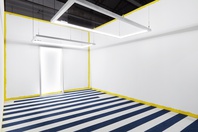Brendan Van Hek
Gadigal Country, Sydney
2021
Displayed 2021 at Carriageworks

Brendan Van Hek
Born 1968, Whadjuk Noongar Boodjar Country, Boorloo (Perth). Lives and works on Gadigal Country, Sydney
Brendan Van Hek is an interdisciplinary artist whose works span from small text-based neons to large-scale site-specific installations. Continually exploring new materials, he mines the possibilities inherent in a broad range of mediums from found objects, neon, glass and mirror to timber and metal. In his work, material qualities are often inverted or denied. His recent focus on pattern continues Van Hek’s ongoing preoccupation with ideas of cultural and social erasure and investigates the ease with which control and order can be tested or upset.
Artist text
by Blair French
Brendan Van Hek’s Something to Hold Onto (2021) is a room installation – a gesamtkunstwerk – of subtle uncertainty, a work in a constant, dynamic state of transition and impermanence. The artist transforms a 70-square-metre room at the back of the Bay 21 gallery at Carriageworks into a work in and of itself with just a few elements: carpet, paint, aluminium framing, LED strip lighting. The gallery is no longer a finished architectural space for display, but a provisional space caught between impressions of incompletion and moments of unravelling.
The room is fully carpeted with one-square-metre white carpet tiles over which Van Hek has painted a field of deep blue stripes. Unlike his initial experimentation with this approach for his 2020 Pattern and Effect exhibition at Canberra Glassworks – where the carpet squares sat in sections on the floor as discrete objects in the space, floor works to walk around not over and through – here the carpet takes over the floor with the effect of a geometric painting. Travelling parallel to each other the lines impart a directional impulse within the room, perhaps more optical than physical. Clean and precise in the best traditions of minimalism at the outset, these lines will begin to smudge and muddy throughout the exhibition as the colour lifts on the shoes of visitors to the space and is trodden across the white sections.
The edges of the white walls of the gallery are cut-in with yellow paint, as if framing them as abstract colourfield paintings. But here the provisional quality of the installation is more apparent – is the yellow edging an overlay or underlay? Are these walls to be white, but not quite completed? Or yellow, and barely begun? Are they being returned to the white default setting gallery colour, or in preparation for transformation to an altogether more dominant colour?
Finally, into this environment come five identical objects that oscillate in association between minimalist sculptures and utilitarian architectural design features. Three of these 1.4 x 3 metre metal frames are suspended on the horizontal plane from the ceiling like discrete lighting racks. The other two lean up against the walls, as if they were window frames waiting to be installed somewhere in the space. The interior perimeters of all five frames are lined with white LED strip lighting, giving them an image-like quality but also, crucially, serving to light the whole room.
Although Van Hek’s work has been characterised more by the use of neon light for over a decade, these LED works are in keeping with the manner in which he draws on material structures of the everyday from architecture, design, industrial processes and commercial applications. They also reveal his continuing interest in the way in which objects emanating light – light sculptures – create their own perceptual field and atmosphere.
In the past Van Hek’s use of light has focused on concepts and experiences of clarity and visibility – not certainty as such but a state of luminescence that has epistemological and spiritual correspondences – as well as on creating perceptual utilitarianism. Here, however, everything is unfixed, active, in a state of instability. The work is entropic. It will visibly deteriorate over the period of the exhibition. Its interactions with audiences will mark it. The experience and atmosphere of the space will change. Its making will continue through a period of unmaking. Form will slowly give way to the social, bringing with it new form.
Brendan Van Hek
4min
Brendan Van Hek discusses his work at Carriageworks
Artist's acknowledgements
Brendan Van Hek is represented by Sarah Cottier Gallery, Sydney.
This project has been assisted by the NSW Government through Create NSW.
The artist thanks Consuelo Cavaniglia for her assistance in the production of the work.


